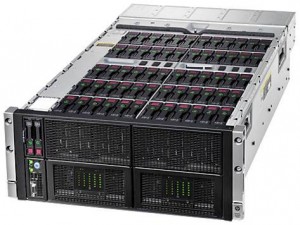 In another of their announcements on the first day of EMC World, EMC announced a series of major updates and new features for their software-defined storage (SDS) platform, ViPR. The new updates will be in ViPR 2.0
In another of their announcements on the first day of EMC World, EMC announced a series of major updates and new features for their software-defined storage (SDS) platform, ViPR. The new updates will be in ViPR 2.0
While storage solutions will always require that hardware be involved, software-defined storage allows the ability to provide storage services without being tied to any specific hardware.
ViPR works by separating the control plane from the data plane. This means ViPR come in two parts, ViPR Controller, and ViPR Services. ViPR 2.0 makes additions on both sides.
ViPR Services
ViPR 1.0 offered object-based storage services and HDFS. ViPR 2.0 expands upon these and adds block-based storage services.
For object, ViPR 2.0 supports Amazon S3, Atmos, and adds Centera CAS API support.
HDFS services in 2.0 remain much the same.
ViPR 2.0 adds block-based storage services. These services are enabled by ScaleIO and by the addition of OpenStack support. Initially, at least, these block services are iSCSI only.
Commodity Hardware Support
 Version 2.0 adds the first-ever commodity hardware support to ViPR. Initially, the only such hardware supported is the HP Proliant SL4540 Gen8 server, although adding support for other hardware is planned.
Version 2.0 adds the first-ever commodity hardware support to ViPR. Initially, the only such hardware supported is the HP Proliant SL4540 Gen8 server, although adding support for other hardware is planned.
The HP SL4540 can be configured with:
- 1 or 2 processors
- 4, 6, or 8 processor cores
- 12 DiMM slots
- 2 small form-factor (SFF) SATA or SSD drives, plus 15, 25, or 60 large form-factor (LFF) SATA, SAS, or SSD drives
Interestingly, HP lists the form factor of a fully-configured SL4540 as 4.3U, which is the first time I can recall having seen a non-integer number of Rack Units listed for a piece of hardware.
Geo-Distributed (Multi-Site) Support
ViPR 2.0 adds enhanced support for both VPLEX and RecoverPoint. This support allows ViPR to work across more than one physical data center. Data can be distributed across the sites.
Additionally, data can be replicated across sites under ViPR’s control. This allows for improved data protection and reliability. ViPR will also replicate indexes and metadata across sites.
Enhanced Native Array Support
In 1.0, ViPR provided native support for:
- EMC Isilon
- EMC VMAX
- EMC VNX
- NetApp FAS Series
Version 2.0 adds support for:
- EMC Project Nile
- EMC ScaleIO
- Hitachi HUS VM
- Hitachi VSP
- HP SL4540
- VCE Vblock
In addition to supporting more arrays natively, ViPR 2.0 allows for auto-discovery of supported arrays. It also now allows the addition of pre-provisioned environments.
OpenStack Support
ViPR 2.0 supports the use of even more arrays than those listed above through OpenStack.
Third-party arrays supported through OpenStack include:
- Dell EqualLogic
- HP 3PAR
- HP LeftHand
- IBM DS8000
- IBM SVC
- IBM XIV
- NetApp E-Series
- Oracle ZFS
- SolidFire
While arrays on the “native support” list can be auto-discovered and automatically added to ViPR Controller, adding an array supported via OpenStack is a manual process.
Data Protection
ViPR 2.0 adds additional data protection options, both locally and across sites. Administrators can define failure domains at multiple levels: individual disk, node, rack, and data center.
Additionally, rather than a traditional RAID configuration, ViPR uses a patent-pending “hybrid encoding” mechanism that enables data protection with very low storage overhead.
Availability
ViPR 2.0 is planned for GA before the end of Q2.



Pingback: EMC’s Nile Makes the Leap from Project to Product | GeekFluent
Pingback: EMC Announces Service Assurance Suite 9.3 | GeekFluent
Pingback: EMC Announces Next-Generation VMAX Storage Array | GeekFluent
Pingback: Cisco Expands Storage Networking Porfolio | GeekFluent
Pingback: GeekFluent Round-up of VMware’s Announcements from Monday of VMworld 2014 | GeekFluent